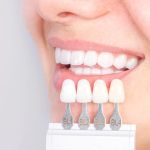Preventing Tooth Decay in Children: A Comprehensive Approach
Tooth decay is a common issue among children, but with the right knowledge and actions, it can be prevented. Let's delve into the various aspects of protecting your child's oral health.
One of the primary causes of tooth decay in children is the build-up of bacteria. Bacteria colonies form plaque, a sticky film that adheres to the teeth. When this plaque is not removed through proper brushing, it leads to the production of acids that erode the tooth enamel, initiating the process of cavity formation.
Good feeding habits play a crucial role in preventing tooth decay. It's essential to limit sugary and starchy snacks, as they provide a feast for the harmful bacteria in the mouth. Instead, choose snacks that are less likely to stick to the teeth, such as yogurt, cheese, nuts, and apple slices.
Starting dental care early is vital. As soon as the first tooth appears, gentle cleaning should commence. For infants, a washcloth or a special teething toothbrush can be used. As children grow, the appropriate amount and type of toothpaste should be selected.
Parents need to be cautious about sharing utensils or pacifiers with their children, as this can transfer cavity-causing bacteria. Maintaining good oral hygiene themselves is also important to reduce the risk of transmission.
Teaching children to floss properly is another important aspect. Floss sticks can be more manageable for little hands, but supervision is necessary to ensure correct usage and avoid gum irritation.
Electric toothbrushes can make brushing more effective and enjoyable for kids. They can help remove food and plaque more efficiently.
Until children reach the age of 7-8, they may need assistance with brushing to ensure thorough cleaning. The ability to write neatly can be an indicator of their readiness for independent brushing.
Sealants can be applied to molars to provide an extra layer of protection, especially in areas that are difficult to clean.
Regular professional dental cleanings and fluoride treatments are essential. Dentists can detect early signs of decay and take appropriate measures to prevent further damage.
In conclusion, preventing tooth decay in children requires a combination of proper diet, good oral hygiene habits, and regular dental check-ups. By taking these steps, you can ensure your child has a healthy, cavity-free smile for years to come.


 Dental Smiles of West Chicago
Dental Smiles of West Chicago Pearl River Family Dentistry
Pearl River Family Dentistry Central Dental - Dentist Westchester NY
Central Dental - Dentist Westchester NY Pro Dentists of Buford
Pro Dentists of Buford Smileland Pediatric Dentistry & Braces of Westborough
Smileland Pediatric Dentistry & Braces of Westborough Seattle Smiles Dental
Seattle Smiles Dental The Importance of Oral Health Education During Pregnancy for a Healthy Pregnancy
The Importance of Oral Health Education During Pregnancy for a Healthy Pregnancy Why Skipping Dental Checkups Can Lead to Bigger Oral Health Problems
Why Skipping Dental Checkups Can Lead to Bigger Oral Health Problems Advantages of Porcelain Dental Restorations
Advantages of Porcelain Dental Restorations Best Tips for Brushing Your Teeth Properly for Healthy Gums: Essential Techniques for Oral Health
Best Tips for Brushing Your Teeth Properly for Healthy Gums: Essential Techniques for Oral Health How Can Diabetes Cause Tooth and Gum Problems? Preventing and Managing Oral Health Issues
How Can Diabetes Cause Tooth and Gum Problems? Preventing and Managing Oral Health Issues Healthy Habits for Promoting Good Oral Health and Hygiene: Tips for a Healthy Smile
Healthy Habits for Promoting Good Oral Health and Hygiene: Tips for a Healthy Smile